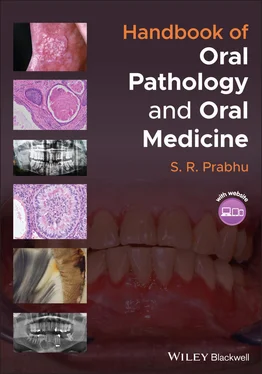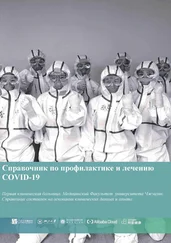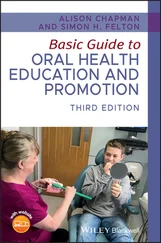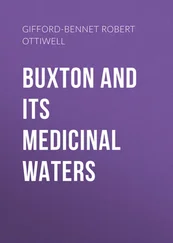S. R. Prabhu - Handbook of Oral Pathology and Oral Medicine
Здесь есть возможность читать онлайн «S. R. Prabhu - Handbook of Oral Pathology and Oral Medicine» — ознакомительный отрывок электронной книги совершенно бесплатно, а после прочтения отрывка купить полную версию. В некоторых случаях можно слушать аудио, скачать через торрент в формате fb2 и присутствует краткое содержание. Жанр: unrecognised, на английском языке. Описание произведения, (предисловие) а так же отзывы посетителей доступны на портале библиотеки ЛибКат.
- Название:Handbook of Oral Pathology and Oral Medicine
- Автор:
- Жанр:
- Год:неизвестен
- ISBN:нет данных
- Рейтинг книги:5 / 5. Голосов: 1
-
Избранное:Добавить в избранное
- Отзывы:
-
Ваша оценка:
- 100
- 1
- 2
- 3
- 4
- 5
Handbook of Oral Pathology and Oral Medicine: краткое содержание, описание и аннотация
Предлагаем к чтению аннотацию, описание, краткое содержание или предисловие (зависит от того, что написал сам автор книги «Handbook of Oral Pathology and Oral Medicine»). Если вы не нашли необходимую информацию о книге — напишите в комментариях, мы постараемся отыскать её.
Discover a concise overview of the most common oral diseases in a reader-friendly book Handbook of Oral Pathology and Oral Medicine
Handbook of Oral Pathology and Oral Medicine
Handbook of Oral Pathology and Oral Medicine — читать онлайн ознакомительный отрывок
Ниже представлен текст книги, разбитый по страницам. Система сохранения места последней прочитанной страницы, позволяет с удобством читать онлайн бесплатно книгу «Handbook of Oral Pathology and Oral Medicine», без необходимости каждый раз заново искать на чём Вы остановились. Поставьте закладку, и сможете в любой момент перейти на страницу, на которой закончили чтение.
Интервал:
Закладка:
1.2.5 Radiographical Features
Cone beam computed tomography (CBCT) precisely defines the location of the tooth and its proximity to vital anatomical structures such as the nasal floor and nasopalatine canal
1.2.6 Diagnosis
History
Clinical examination
Radiography
1.2.7 Management
Extraction in most cases
1.3 Microdontia and Macrodontia
1.3.1 Definition/Description
Microdontia: size of the tooth unusually smaller than average
Macrodontia: size of the tooth unusually larger than average
1.3.2 Frequency
Differences in prevalence rates exist
Approximate prevalence in general population:1.58% for microdontia0.03% for macrodontiaMicrodontia in maxillary lateral incisors (‘peg laterals’) is common (0.8–8.4%)
1.3.3 Aetiology/Risk Factors
Maternal influences, genetic and environmental factors.
Deciduous teeth are affected more due to intrauterine maternal influences
Permanent teeth are affected more due to environmental factors Figure 1.3 Microdontia: maxillary left lateral incisor (‘peg lateral’) is cone shaped and smaller than average for lateral incisor(source: by kind permission of Professor Charles Dunlap, Kansas City, USA).
1.3.4 Clinical Features
Generalized microdontia involving all teeth is extremely rare
Generalized macrodontia is rare: often seen in pituitary gigantism
Generalized microdontia may be a feature of Down syndrome and pituitary dwarfism
Microdontia may be associated with hypodontia
Macrodontia may be associated with hyperdontia
Microdontia is more frequent in females
Macrodontia is more frequent in males
Maxillary lateral incisor is commonly involved in microdontia (peg lateral; Figure 1.3)
Isolated microdontia is frequently seen in third molars
Isolated macrodontia is occasionally seen in incisors, canines, second premolars and third molars (fused and geminated teeth to be differentiated from macrodontia)
1.3.5 Diagnosis
History
Clinical examination
For macrodontia, radiography is useful to rule out gemination or fusion
1.3.6 Management
No treatment is required unless for aesthetic purposes.
Porcelain crown for peg lateral is often used
1.4 Gemination, Fusion and Concrescence
1.4.1 Definition/Description
Gemination: attempt at a single tooth bud to divide, resulting in a tooth with bifid crown and a common root and root canal (clinically seen as double teeth)
Fusion: union of two normally separated tooth buds resulting in a joined tooth with confluent dentine (clinically seen as double teeth) and separate root canals
Concrescence: union of two teeth by cementum without confluence of dentine
1.4.2 Frequency
Varies; approximate prevalence rates are:Gemination: 0.22%Fusion: 0.19%Concrescence: 0.8% in permanent teeth and 0.2–3.7% in deciduous teeth
1.4.3 Aetiology/Risk Factors
Gemination and fusion: evolution, trauma, heredity and environmental factors
Concrescence: inflammation around roots
1.4.4 Clinical Features
Tooth count:Individuals with gemination have a normal tooth count. Clinically seen as double teeth but radiograph shows common root canal ( Figure 1.4a,b)Individuals with fusion show a missing tooth due to the union of two teeth. Clinically seen as a large tooth crown ( Figure 1.4c)Individuals with concrescence have a normal tooth count. Roots of two teeth are joined by cementum ( Figure 1.4d)
Gemination: more common in the maxilla
Fusion: more common in the mandible
Concrescence: common in posterior maxillary region. Often, second molar roots are joined with adjacent impacted third molar roots
Gemination and fusion in deciduous teeth may cause crowding, abnormal spacing or delayed eruption of permanent teeth
1.4.5 Radiographical Features
Gemination: common root, common root canal
Fusion: separate roots and root canals
Concrescence: roots joined at cementum of two adjoining teeth. CBCT is useful for concrescence (gives a three‐dimensional image)
1.4.6 Diagnosis
History
Clinical examination
Radiography
1.4.7 Management
Depends on patient requirement
Usually not indicated unless symptomatic due to other causes, such as extensive caries, periodontal pathology or interference with tooth eruption Figure 1.4 (a) Gemination; mandibular right incisors show gemination. Note the presence of all incisors. (b) Radiograph of bilateral gemination in maxillary central incisors. Note incisal notch and common root and root canal. (c) Fusion; shows left maxillary lateral incisor fused with the central incisor. (d) Concrescence; roots of two teeth are joined by cementum.(sources: a–c, by kind permission of Professor Charles Dunlap, Kansas City, USA); d, by kind permission of Dental Press Publishing, Brazil.)
1.5 Taurodontism and Dilaceration
1.5.1 Definition/Description
Taurodontism refers to an enlarged pulp chamber, apical displacement of the pulpal floor and no constriction at the level of the cementoenamel junction
Dilaceration refers to abnormal angulation or bend in the root
1.5.2 Frequency
Range:Taurodontism: 0.5–4.6% in general populationDilaceration: 0.3–15% in general population
1.5.3 Aetiology/Risk Factors
Taurodontism:Failure of Hertwig's epithelial root sheath diaphragm to invaginate at the proper horizontal levelNo genetic association
Dilaceration:IdiopathicInjury that displaces the calcified portion of the tooth germ from the uncalcified portion resulting in an abnormal angle of the root
1.5.4 Clinical Features
Taurodontism:May be unilateral or bilateralPermanent teeth are frequently affectedNo gender predilectionMay occur as a part of syndromes such as Klinefelter syndrome, Mohr syndrome and McCune–Albright syndromeIncreased frequency in patients with cleft lip, cleft palate and those with hypodontia.Increased chances of pulp exposure in decayed teeth with taurodontismDegree of taurodontism:hypotaurodontism (mild form)mesotaurodontism (moderate form)hypertaurodontism (severe form)
Dilaceration:Mandibular third molars are frequently involved followed by maxillary second premolars and mandibular second molarsRare in deciduous dentitionAsymptomatic in most casesAssociated with syndromes (e.g. Ehlers–Danlos syndrome)
1.5.5 Radiographical Features
Taurodontism:Commonly detected on routine radiographyInvolved teeth presume a rectangular shapeThe pulp chamber is exceedingly large with a greater apical–occlusal height than normalThe tooth lacks the usual constriction at the cervical regionRoots are exceedingly short and trifurcation or bifurcation may be seen a few millimetres above the apices of the roots ( Figure 1.5a)
Dilaceration:Radiographically, detected as mesial or distal bend in the root ( Figure 1.5b)Periodontal ligament space is normalDetected on routine radiography Figure 1.5 (a)Taurodontism of the mandibular first molar shows abnormally large pulp chamber and short roots. (b) Dilaceration of an extracted tooth shows abnormal bend in the roots.(source: by kind permission of Professor Charles Dunlap, Kansas City, USA.)
1.5.6 Management
Taurodontism:No specific treatment required
Читать дальшеИнтервал:
Закладка:
Похожие книги на «Handbook of Oral Pathology and Oral Medicine»
Представляем Вашему вниманию похожие книги на «Handbook of Oral Pathology and Oral Medicine» списком для выбора. Мы отобрали схожую по названию и смыслу литературу в надежде предоставить читателям больше вариантов отыскать новые, интересные, ещё непрочитанные произведения.
Обсуждение, отзывы о книге «Handbook of Oral Pathology and Oral Medicine» и просто собственные мнения читателей. Оставьте ваши комментарии, напишите, что Вы думаете о произведении, его смысле или главных героях. Укажите что конкретно понравилось, а что нет, и почему Вы так считаете.












